97.7% of product professionals who conduct product research include user feedback in the process. This clearly shows that users are the fundamental source of truth when developing new features or products.
And knowing how to play the user feedback game is just as important. This guide covers all things user feedback to get you up and running quickly ⤵️
🧩 The most popular methods to collect user feedback with real-life practical tips
🧩 Best practices for feedback analysis
🧩 Types of user feedback and when and how to use them
Read on to learn how to collect, categorize, and analyze user feedback like a pro.
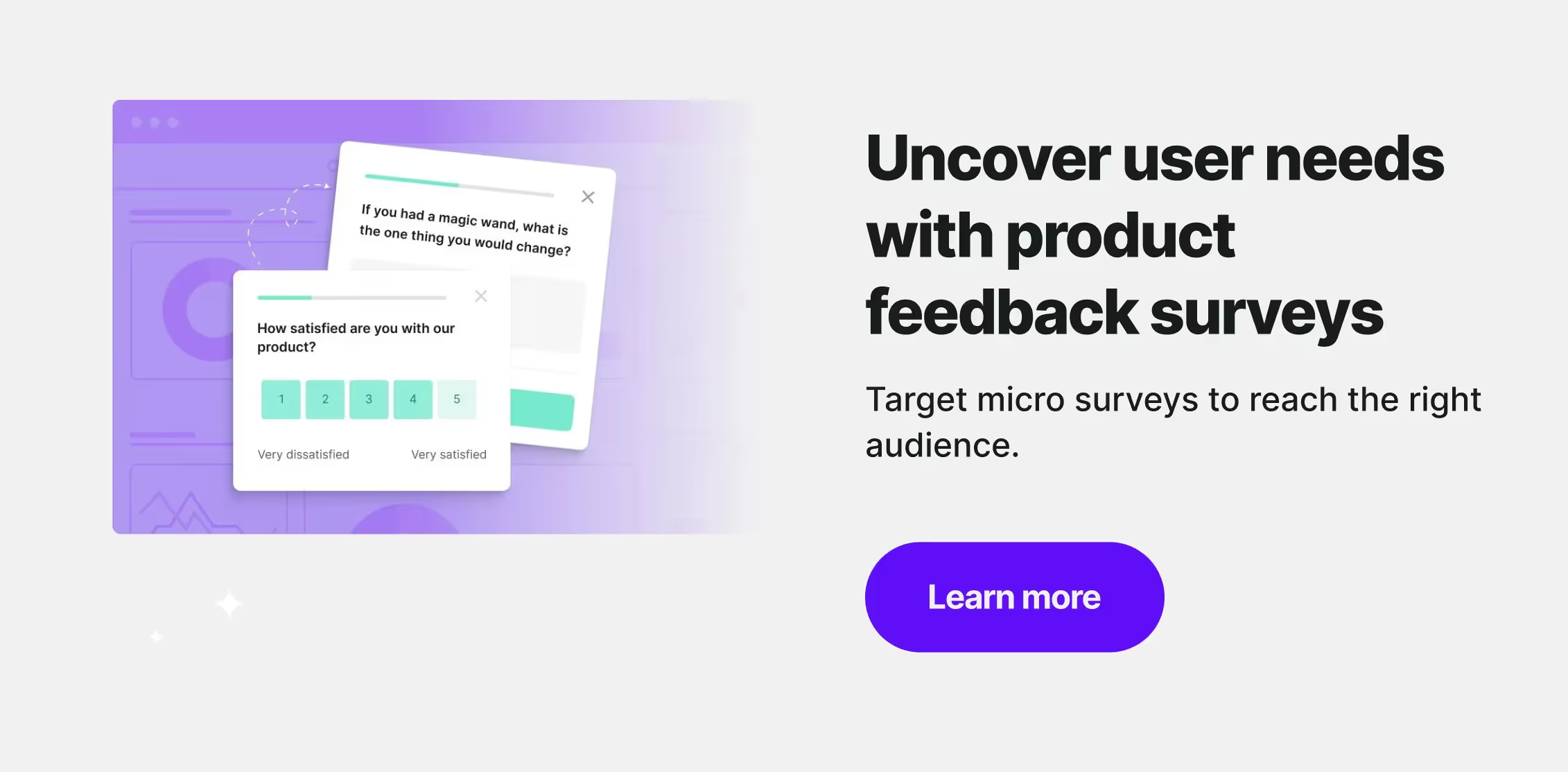
What is user feedback?
User feedback is data you collect from your customers, online visitors, and users, which includes their experiences, preferences, and perceptions about your product.
It’s an effective tool for product teams, researchers, and designers to understand user needs, identify issues, and make informed decisions. With user feedback, you can build better products, improve user experience, improve functionality, and drive iterative product improvements.
Why is user feedback important?
User feedback is crucial for several reasons, but the fundamental one is that it gives you the most valuable perspective—that of your users.
🤝 Understand user needs
In our recent report, Impact of AI on Product Research, nearly 40% of product professionals who took part in our study said that understanding user needs is their primary goal while conducting product research.
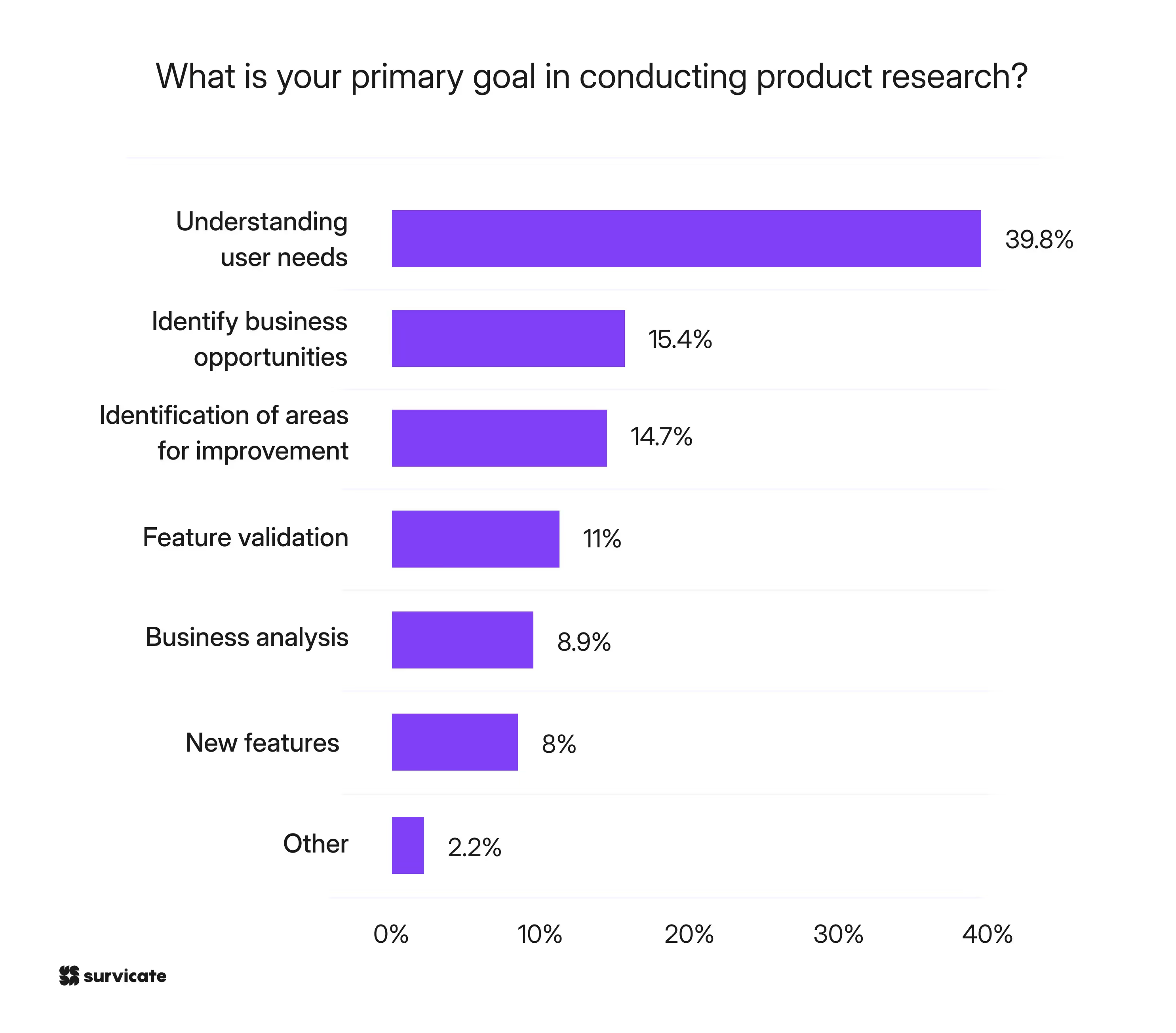
User feedback helps companies better understand what people need and expect from a product or service. This understanding is vital for creating customer-centric designs and features.
🤝 Identify pain points
By gathering user feedback, companies can identify specific issues and friction points users encounter. This information is essential for making targeted improvements in your product and resolving usability issues.
🤝 Improve user experience
Continuous feedback helps you evolve the product according to user expectations, improving the overall in-app, product, and website experience.
🤝 Drive product development
User feedback provides actionable insights that can help design more effective product roadmaps. With user feedback, you can prioritize features and changes that will significantly impact the user experience.
Methods to collect user feedback
Collecting user feedback is essential for understanding how your app performs and where it can improve. Various methods are available to gather this valuable information, each with its own strengths and applications.
Before we get down to them, let's understand the difference between proactive and reactive methods of collecting user feedback, as it is key to choosing the right approach for your needs.
Proactive methods involve actively seeking user opinions before issues arise. They help anticipate user needs and make informed decisions to enhance the user experience.
Conversely, the reactive methods involve collecting feedback in response to user actions or issues. They allow you to address specific problems and gather insights from real-time user experiences.
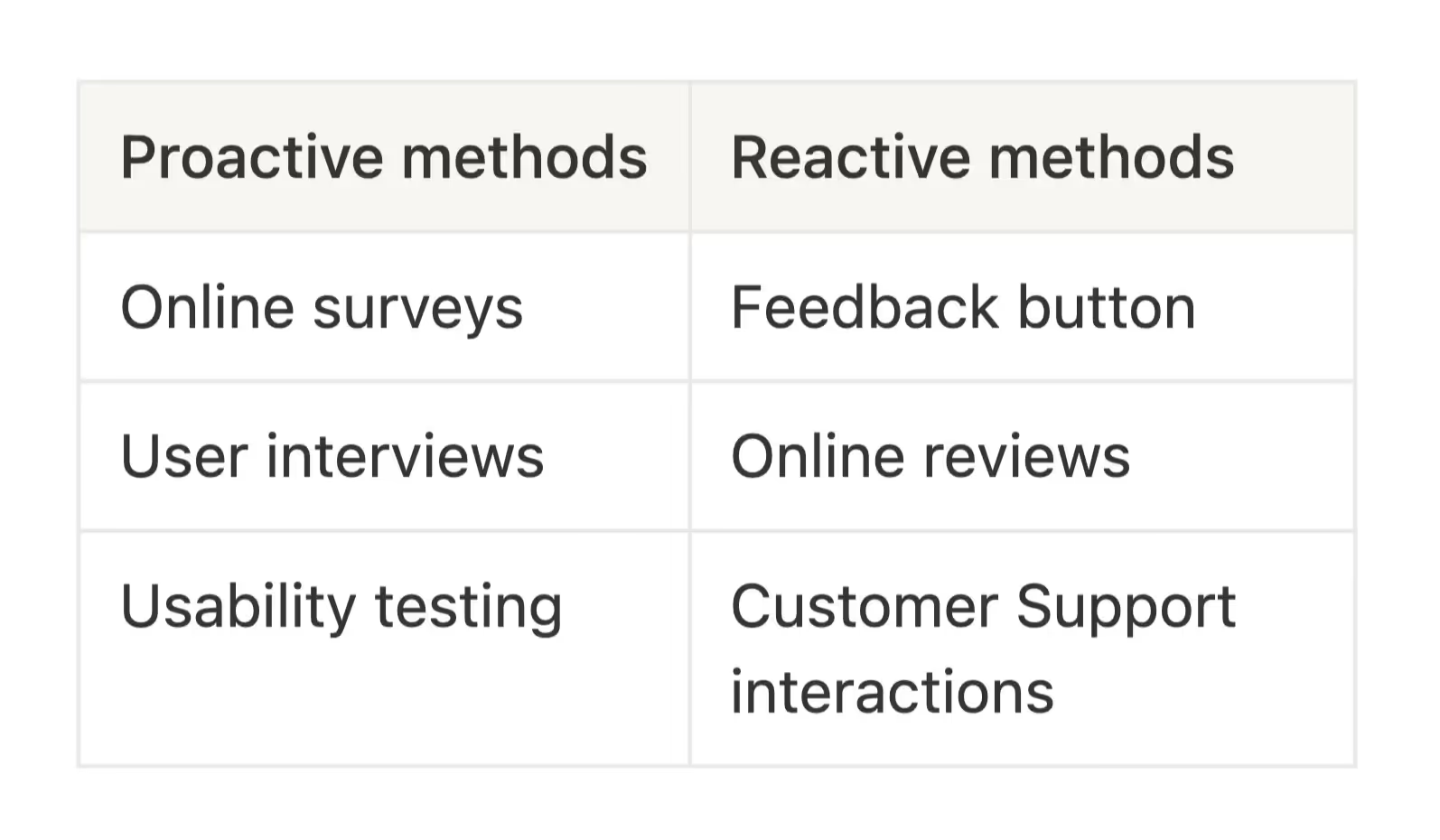
Online surveys and customer feedback forms
Online surveys are the most balanced and fastest way to collect user feedback regarding the resources needed and the results obtained, especially compared to user interviews that take weeks or even months and don’t give scale results.
With surveys, you can maximize the number of respondents with much less effort than with other proactive research methods and get your first insights in minutes.
Different distribution methods allow you to capture various kinds of user feedback. Depending on your goals, you can run both quantitative and qualitative research, ranging from a short, contextual in-product pop-up to a bulkier email survey asking more in-depth questions.
📱In-app user feedback
In-app surveys capture feedback directly from users engaging with your product. With advanced targeting, you can precisely place surveys to collect contextual feedback and unlock a wealth of user insights.
💡Tip: For example, Taxfix collects transactional NPS with an in-app survey. As 75% of their users file their taxes with the mobile app, capturing them within that context is much more effective.
We measure NPS after the user submits their tax declaration. We want to understand how easy the entire process was. And we measure that through in-app messages directly in the product.
Krzysztof Szymański, Former Head of CRM at Taxfix
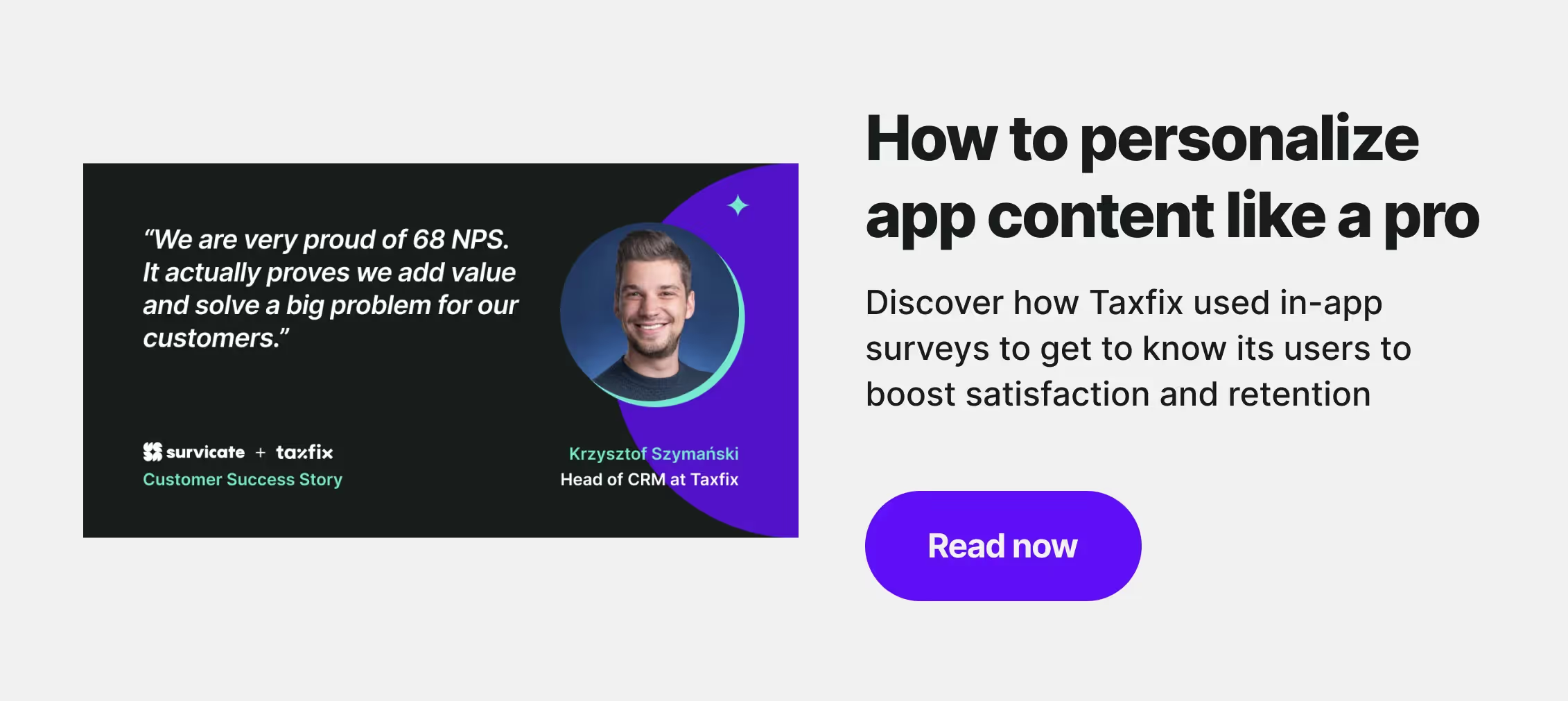
Taxfix also uses this opportunity to ask additional questions that later help in content personalization and eventually build up engagement and user retention.
⚙️ In-product surveys
Similarly to in-app mobile surveys, in-product surveys capture contextual feedback at the core, triggered by user action. Careful targeting will give you actionable insights on specific product features or the digital journey.
💡 Tip: For example, GetResponse's Product teams use automated in-product surveys to monitor product feedback. They usually use effort score surveys placed inside the product and triggered after a specific feature is used.
Our PMs use feedback from effort score surveys to consult and plan the roadmaps of the features they own, to make sure they head the right direction.
Abby Hehemann, Director of Product Marketing at GetResponse
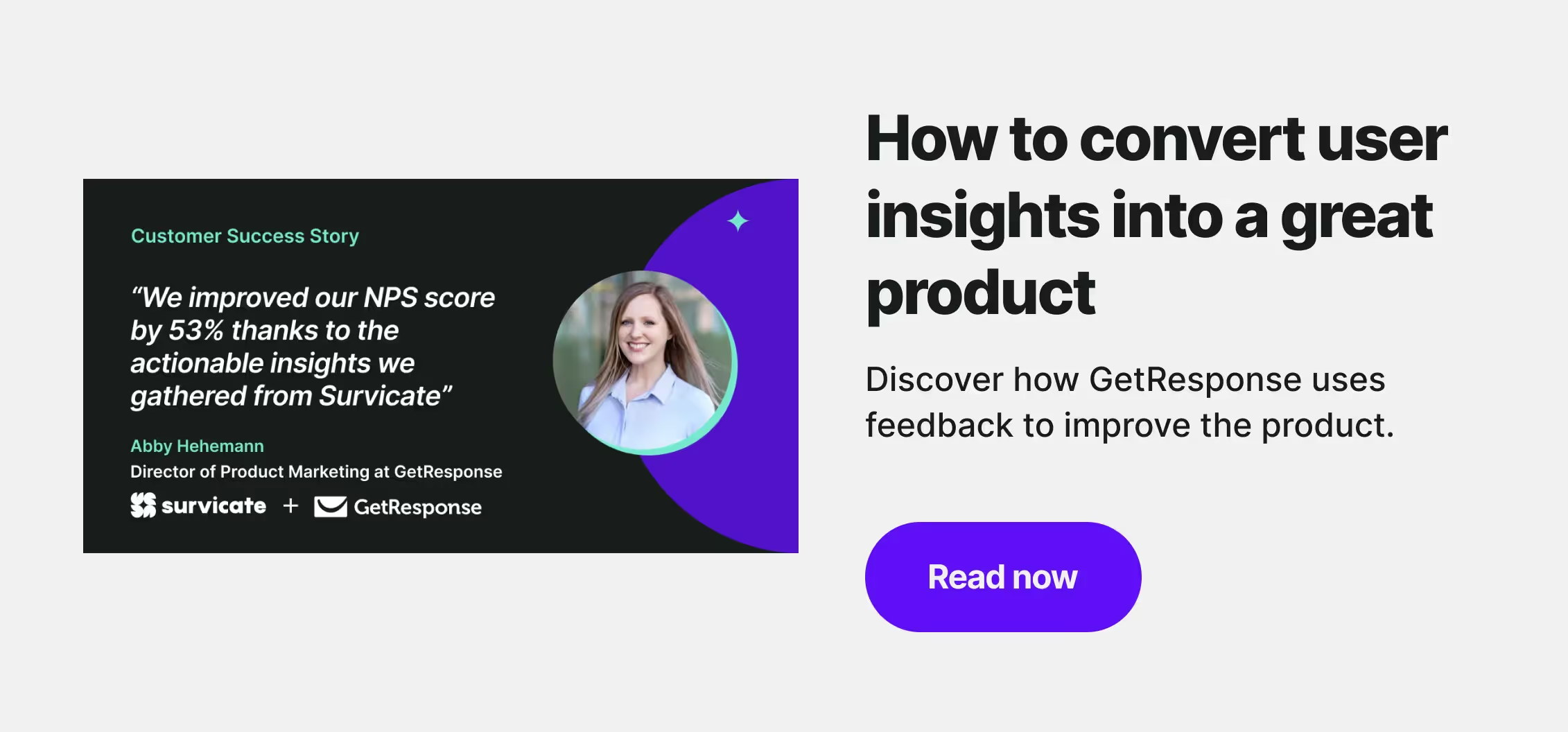
📬 Email surveys
Email surveys are perfect for collecting more detailed feedback with longer surveys. They are also an excellent way to reach your users outside the product or app, which is helpful if you notice they don't log in frequently.
💡Tip: To maximize the response rate, make sure the survey starts with the main question. Survicate collects even partial responses, so having a survey embedded in the email ensures it gathers crucial results.
🍾 Pop-up surveys
Website pop-up widgets are a great fit for collecting contextual user feedback. They can serve as ad hoc research tools or a stable source of user feedback.
💡 Tip: For example, at Survicate, we use pop-up surveys on multiple occasions to collect continuous user feedback on our content, product offer, and more. We also use the Survicate-Slack integration, so every new response lands on a dedicated Slack channel in real time and is easily monitored by our Product and Marketing teams.

Feedback button
The feedback button is a handy tool for passively gathering user feedback. Once set up, it will collect it continuously. At the same time, it will not disrupt the user experience, as it gets activated only when your website visitors or product user clicks on it.
The feedback button creates a space to collect unprompted, often negative feedback that may include reporting bugs, UX issues, or even feature ideas.
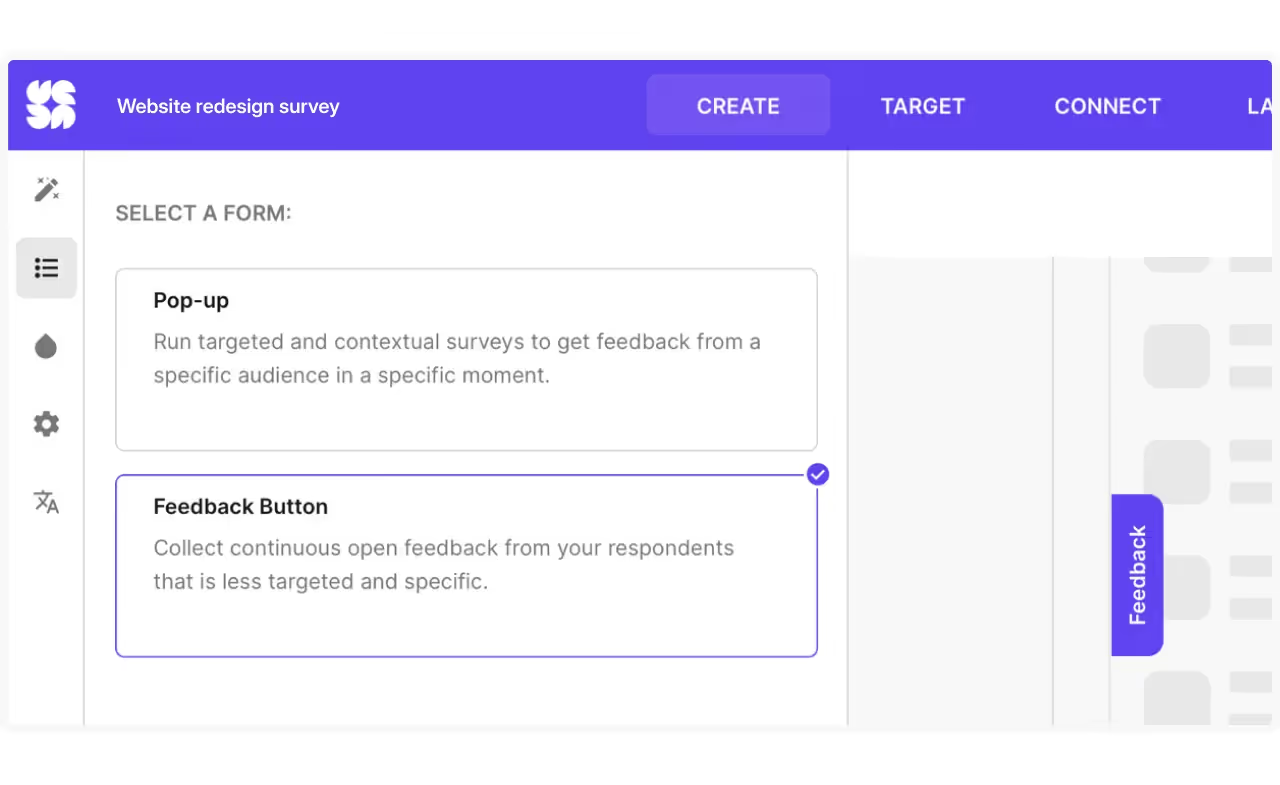
For example, Landing used a feedback button in its creator studio, a popular product feature where users spend the most time. Thanks to it, they were able to detect issues affecting a narrow group of users.
Feedback Button uncovered issues that we wouldn't know about otherwise. If we hadn't been hearing it bubble up through the Feedback Button, we wouldn't have had any way of knowing about it.
Katherine Crutchfield, UXR at Landing (now Zeen)

💡Tip: You can also use it to collect positive reviews and ratings on autopilot. You can add a “rate us” option to the choices and simply watch the good words coming in. ⤵️

User interviews
User interviews are a great source of in-depth qualitative feedback for any user researcher. With a well-designed script and the right research questions, interviews can uncover lots of valuable user feedback.
At the same time, they require considerable effort, time, and resources. Just sourcing the right candidates can take weeks, while time to insights can be delayed even further. So, unless interviewing is part of your product development framework, like in continuous product discovery, your research team will usually use it in larger projects.
💡 Tip: While researching a particular feature or touchpoint within your user flow, you can add in-app surveys to recruit users for a product interview. Just like Medscape, which uses this method as a primary way to get a steady inflow of participants.
We use Survicate as a tool that enters into the discovery methodology to recruit users for interviews. The survey has just one question, it's not too disruptive to the experience. This works really great.
Sandrine Veillet, VP of Global Product at Medscape
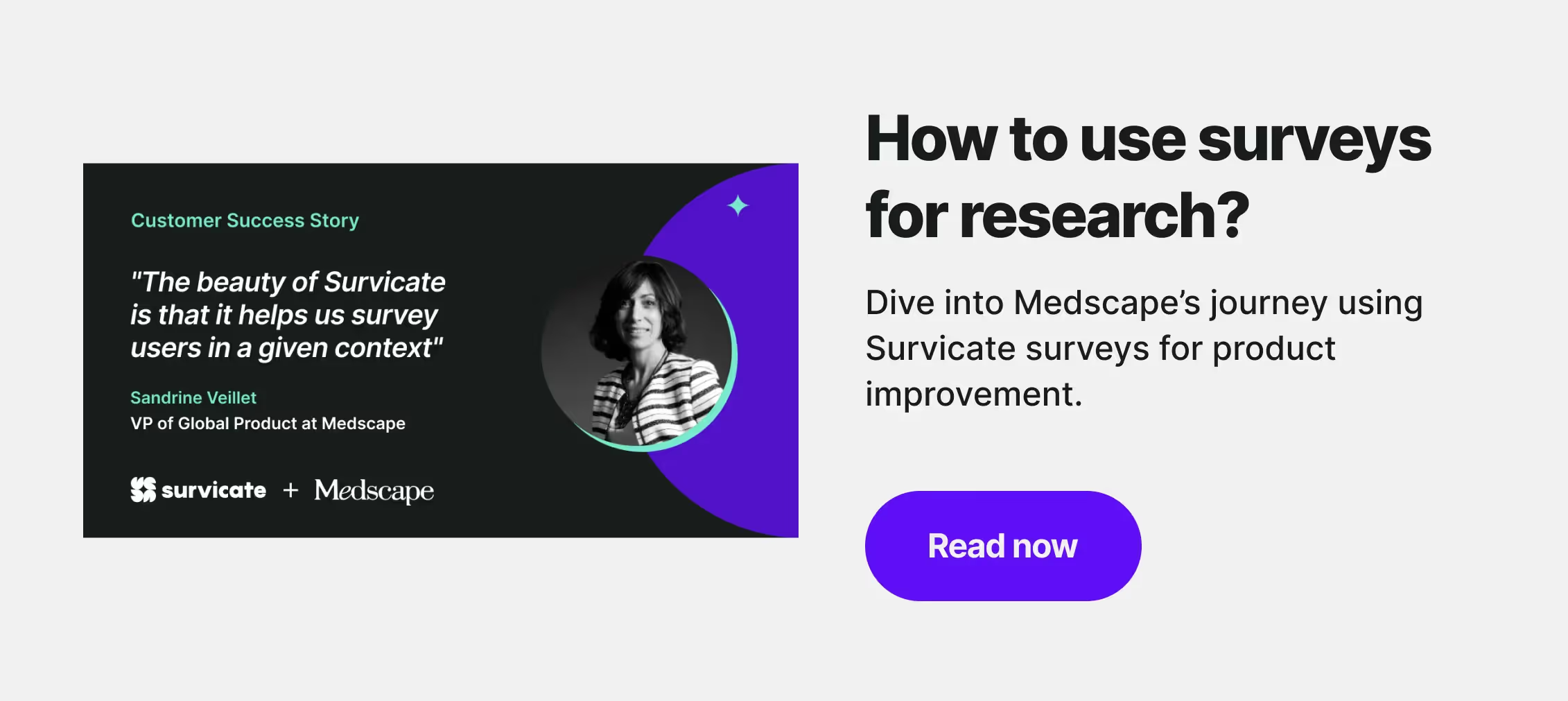
Usability tests
Usability tests are a proactive method of collecting user feedback that involves observing real users as they interact with your website or product. The goal is to identify any usability issues, understand user behavior, and gather insights to improve the overall user experience.
As part of this method, participants complete specific tasks while observers note any difficulties. The tests can be conducted in-person, remotely, or unmoderated.
💡 Tip: Online surveys complement usability tests by providing additional context. After testing, participants complete a survey to share detailed feedback. This helps validate observations and uncover extra insights, enabling more informed decisions and meaningful app improvements.
Online reviews
Online reviews are yet another piece of the puzzle in your unprompted user feedback collection. You can collect them through different review sites or, for mobile apps, in app stores.
77% of mobile app users read at least one review before downloading a free app. The percentage goes up if the app is paid. This shows just how powerful this feedback source is.
You should monitor the site closely, as negative reviews can harm your user acquisition rates. At the same time, encourage your happy users to share their opinions online.
Just like Pranamat, a company that thrives on its affiliate marketing program. They use Survicate to measure transactional NPS and invite their NPS promoters to join the program. Customers who leave a review are encouraged to publish it on social media.
Pranamat's official Facebook page scored 4.9 out of 5 by simplifying the sharing process.
We copy the review into an email, asking the customer to publish it on Facebook. So, it's also easy to copy-paste and share it.
Aleksejs Krūmiņš, Head of Growth Marketing at Pranamat
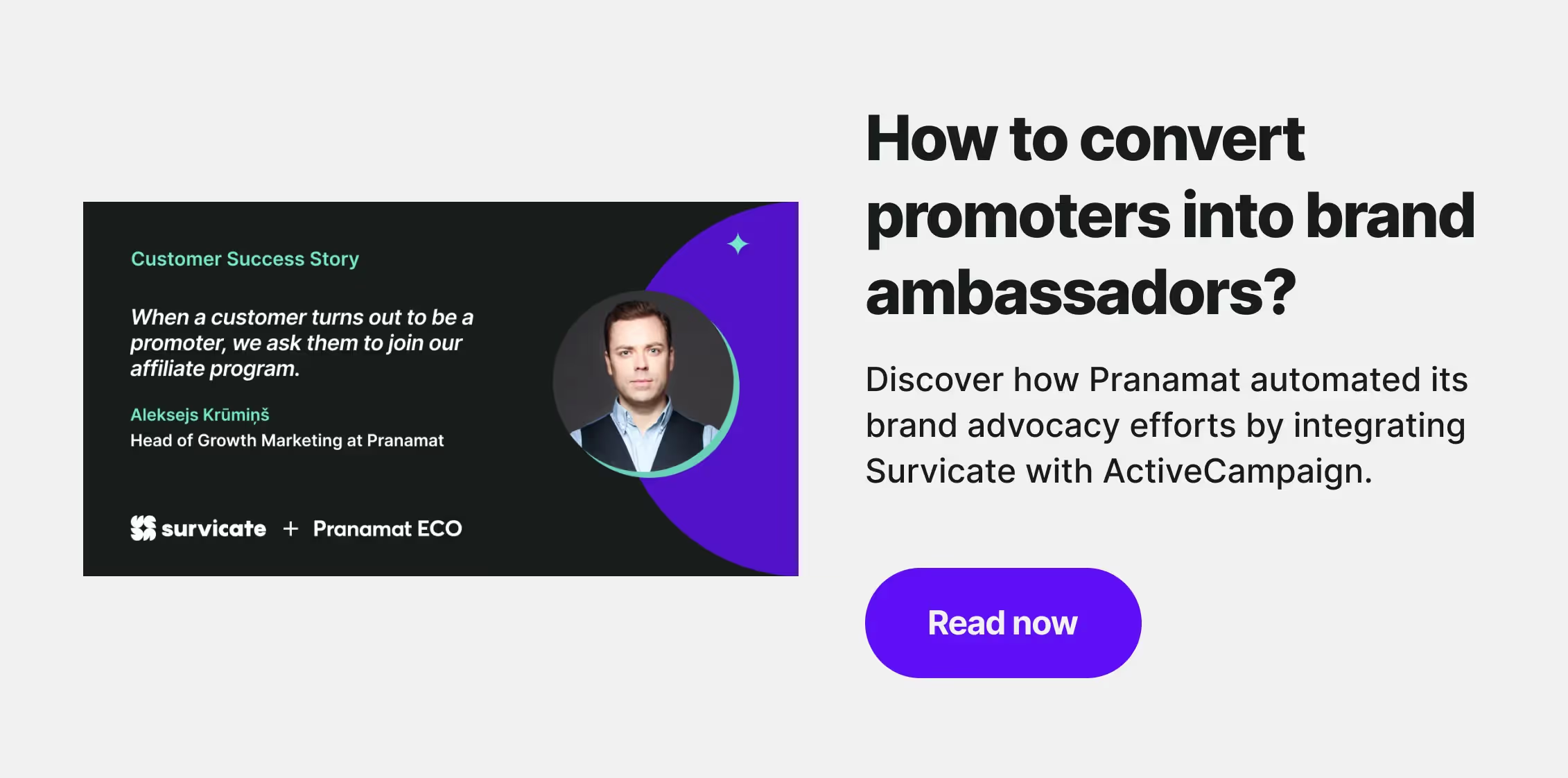
Customer support interactions
By analyzing support tickets, chat logs, and call transcripts, you can identify common issues and areas for improvement. This real-time feedback allows you to address specific problems promptly and understand the recurring challenges your users face.
💡 Tip 1: Use a customer feedback platform, such as Survicate’s Insights Hub, that aggregates feedback from different sources, including customer support interactions from Intercom, Zendesk, and Jira tickets, emails, or apps connected via Zapier.
You’ll have all your feedback in one place, while Insights Hub gets it analyzed with AI, automatically revealing all recurring categories with relevant insights.

💡Tip 2: For example, ParkBee anticipates users reaching out by sending a CSAT survey each time they use the company's services. By including a user feedback tool in the customer journey, ParkBee gathers valuable qualitative feedback that, along with quantitative data, paints a complete picture of the customer experience.
We ask for feedback after every parking session. Each time someone uses ParkBee, we send out a CSAT survey to ask about their recent experience.
Louise Alberg, CS Manager at ParkBee
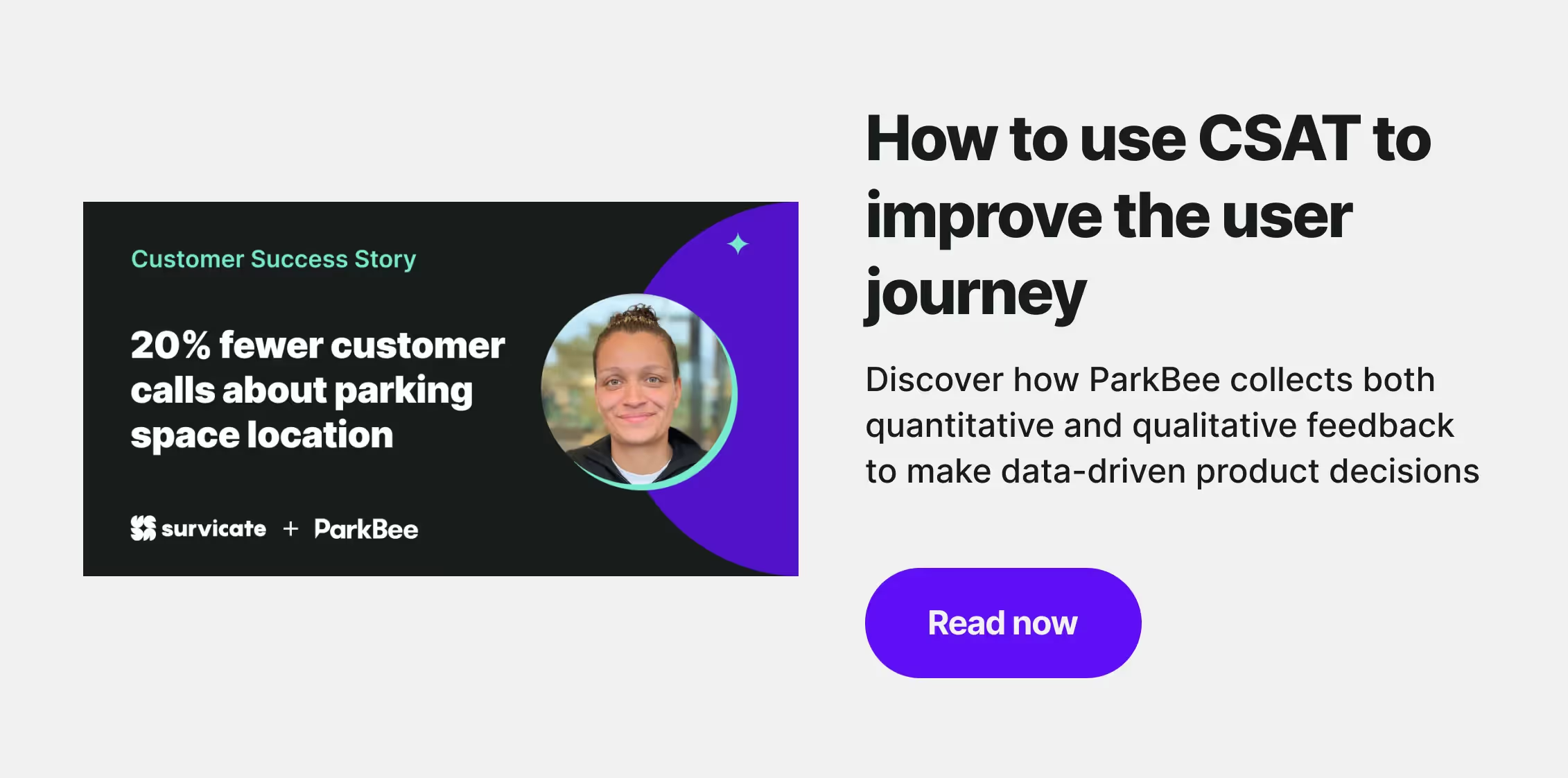
How to analyze user feedback?
All the user feedback in the world will be useless if you don't analyze it to draw action points for your next planning sessions. User feedback, as such, is raw data that requires polishing to present real value. Just like diamonds 💎
Step 1: Define your research goals
The first step in analyzing feedback is to clearly define your research goals.
It will focus your study, guiding your approach and methods to efficiently gather the most relevant information. For example, instead of vague objectives like "explore data," set more specific goals such as "understand user behavior patterns" or "identify pain points."
Crucially, you have to remember to tie your goals to business objectives to ensure your research is impactful.
Step 2: Collect feedback from multiple sources
The more versatile feedback comes from multiple sources. Of course, there are some feedback types that you can only collect with a specific method, like NPS or CSAT with surveys. Nonetheless, if you're looking into broader problems, such as "improving app conversion," you should use the various methods we mentioned earlier to gather the most actionable feedback from a wide range of users.
Add this to a strong product analysis based on your metrics, and you're ready to move forward.
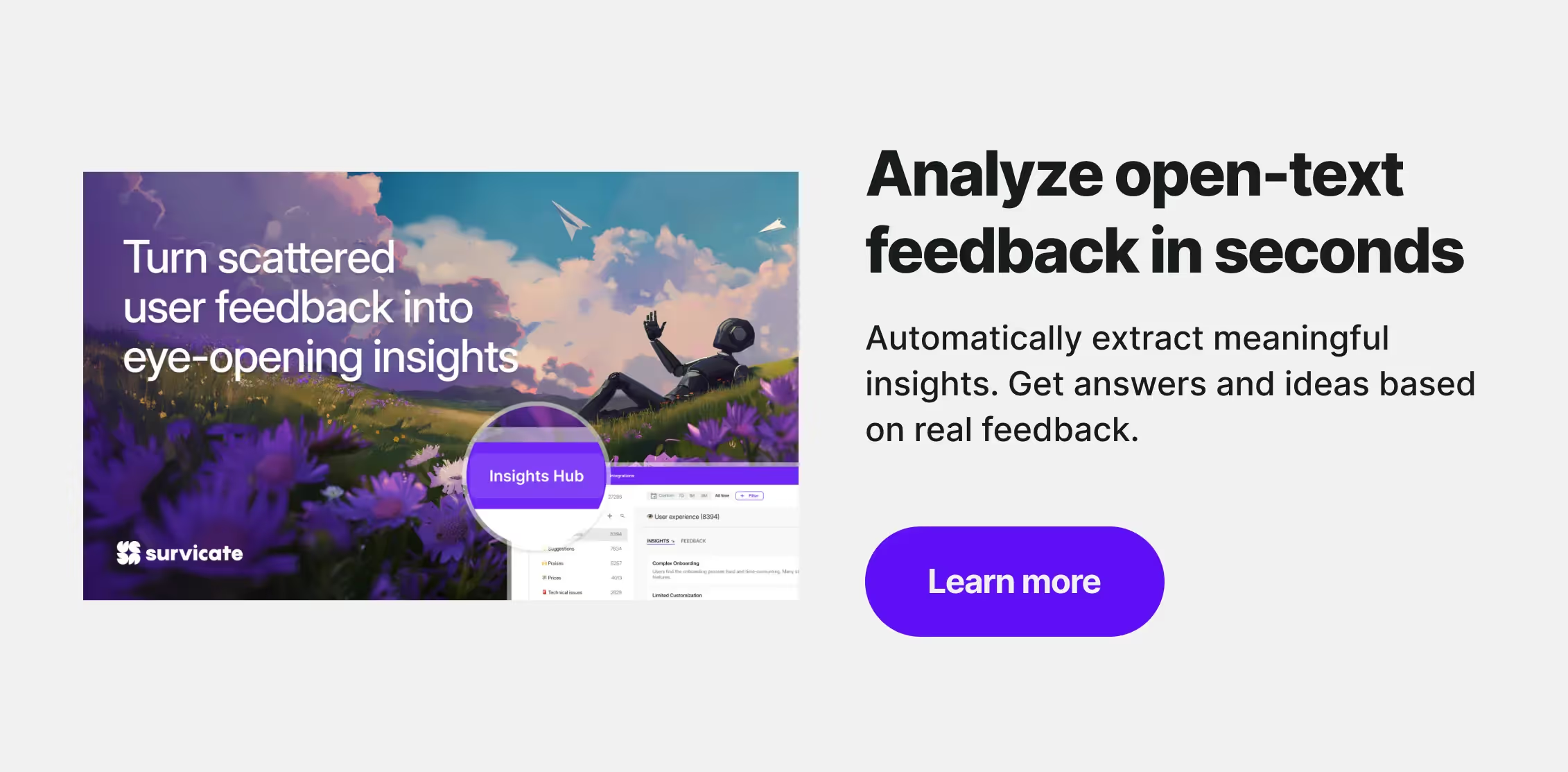
Step 3: Categorize user feedback
Once it’s collected, categorize the feedback into themes or topics. Common categories could include prices, suggestions, user experience, or technical issues. This helps identify recurring issues and trends.
💡 Tip: We recommend using an AI-powered customer feedback analytics tool such as Insights Hub for the process. Manually categorizing and analyzing qualitative feedback will take much longer and might overlook essential insights.
“Survicate's Insights Hub is a good example of how AI can help condense feedback into a consumable format. Other areas where I think AI can help include user segmentation based on more than just user attributes and developing a user persona over time that I can chat with based on my existing surveys.”
- Pranav Goyal Product Manager (AI) at Quizziz
Watch our webinar on how Insights Hub transforms qualitative feedback analysis into an actually pleasant task
Step 4: Identify patterns, trends, and key insights
Look for patterns and trends in the feedback. Are users consistently praising a particular feature? Are there recurring complaints about a specific issue? Identifying these patterns helps in making data-driven decisions.
Again, manually extracting insights about a specific problem can take a lot of time. Our research shows that over 50% of product professionals think analyzing user feedback is AI’s most helpful application.
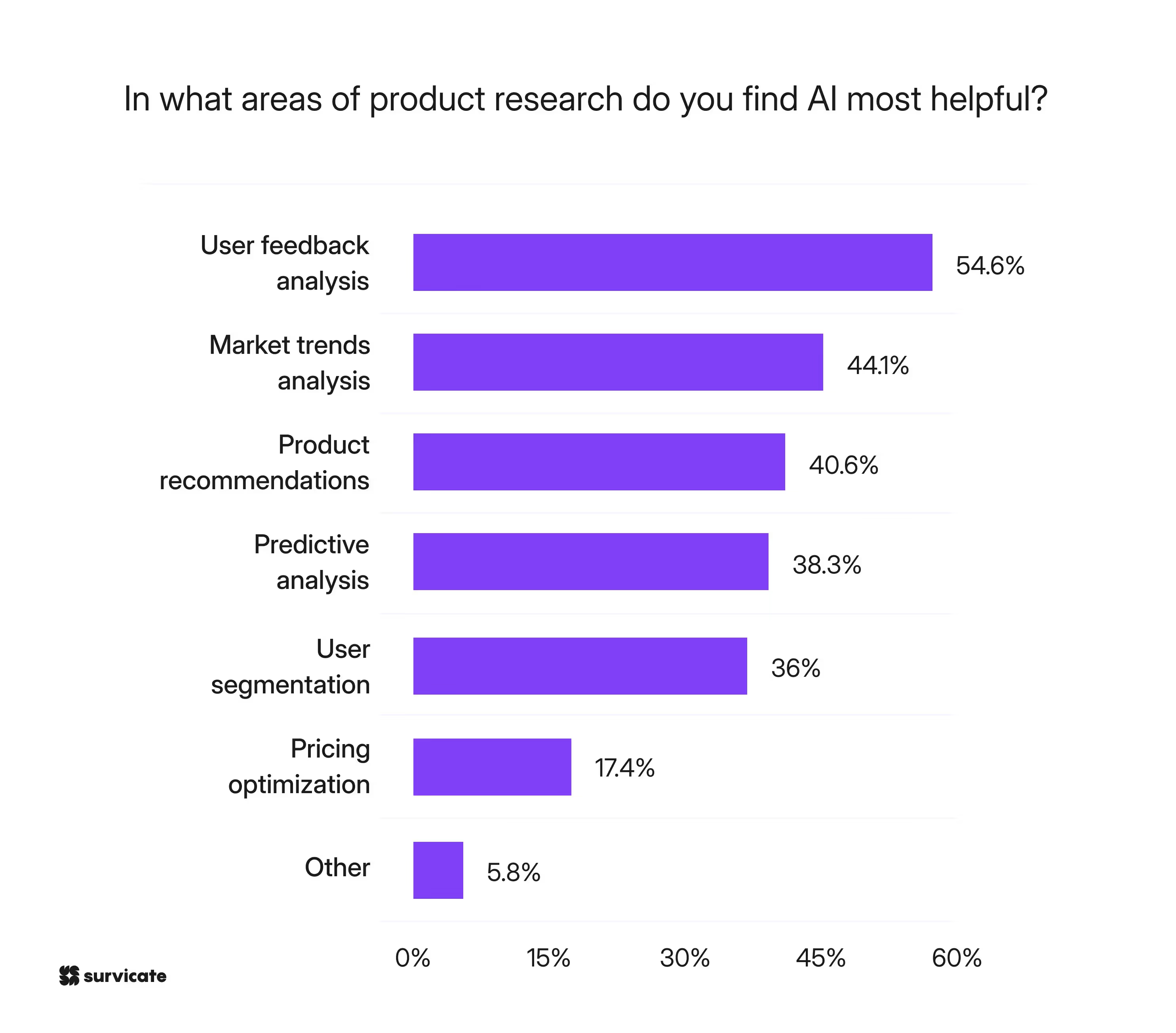
💡Tip: Try using customer feedback analytics software, such as Survicate’s Research Assistant. You can ask it any question, and it will instantly provide answers based on your aggregated user feedback.
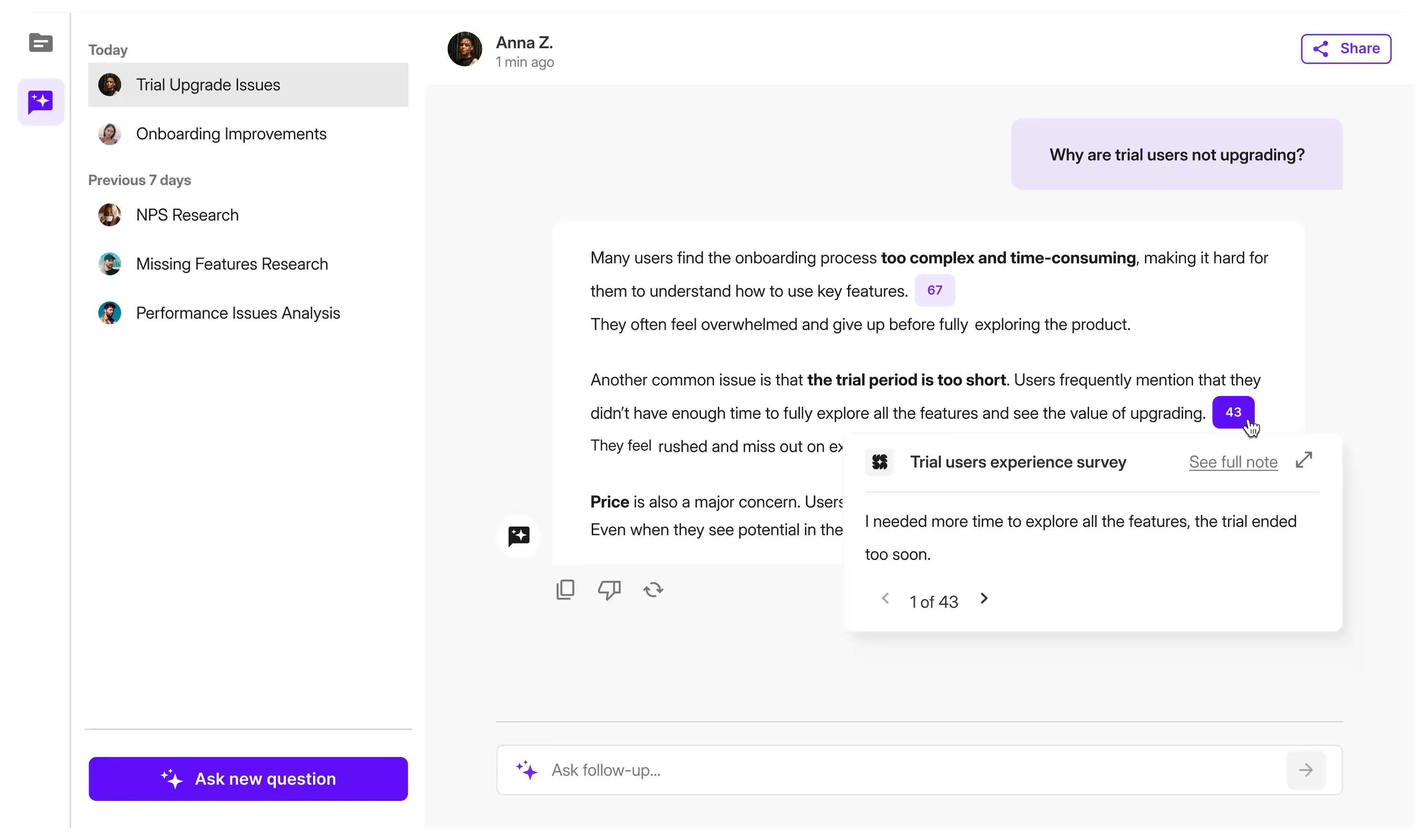
Step 5: Close the feedback loop
After you identify actionable insights, implement the necessary changes. Remember to regularly monitor user feedback to see how the changes you implemented perform and make further adjustments as needed.

Lastly, keep your users informed about the changes you're making based on their feedback. Closing the feedback loop builds trust and encourages more users to share their thoughts in the future.
💡Tip 1: To bring user feedback closer to your daily work, you can integrate surveys with your collaboration tools such as Slack or Microsoft Teams. Just like Preply. Since their Product teams connected the Survicate-Slack integration, they have been able to discuss the incoming feedback real-time and reduce the time needed to address it.
Our Product teams started a Slack channel to get sentiment about their product. They're discussing it on an ongoing basis and can comment on the feedback they get on the thread. This is really cool.
Kateryna Martynova, Head of Research at Preply
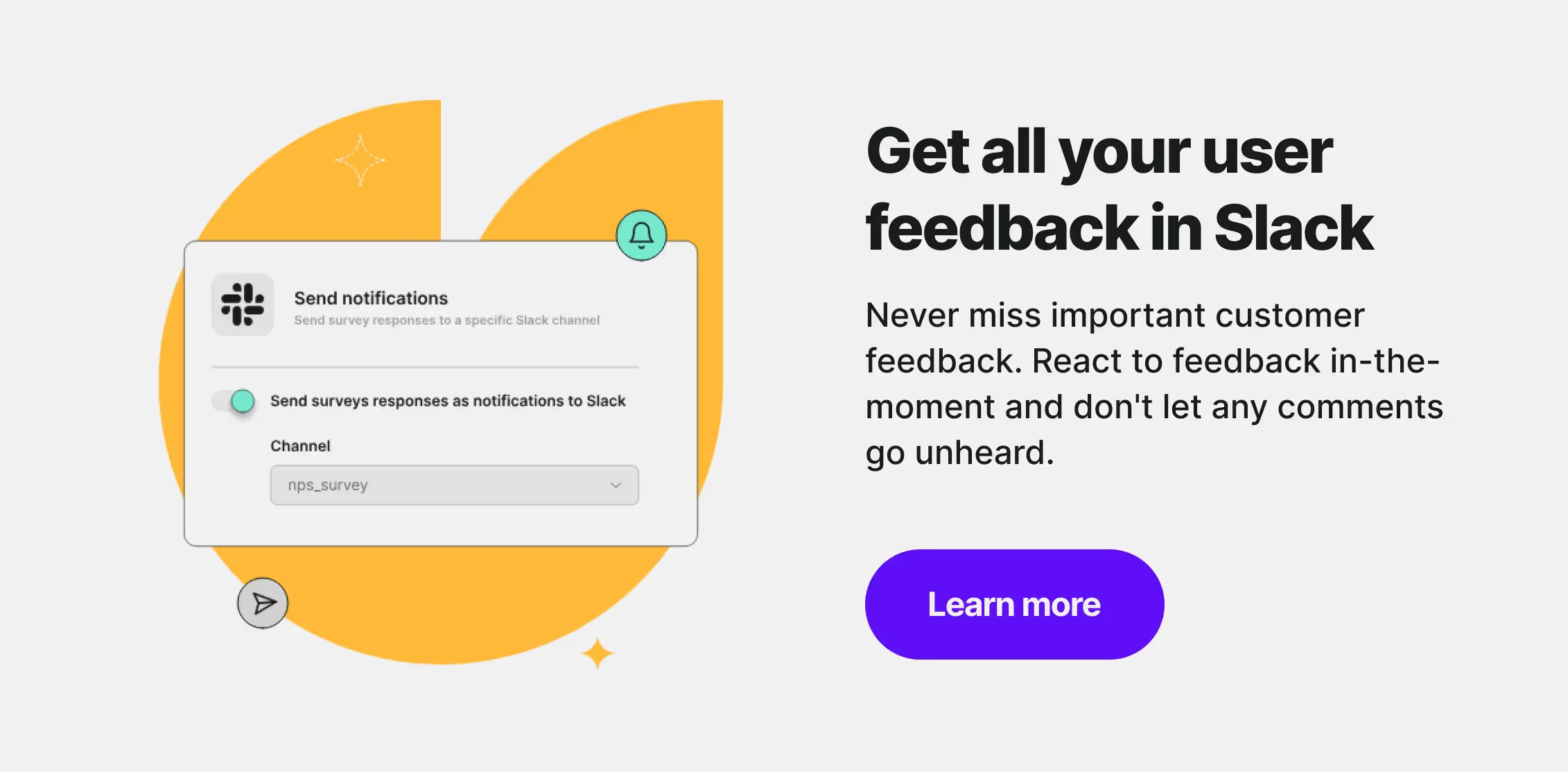
💡Tip 2: Another good practice is integrating survey results with your product data in tools such as Amplitude, Mixpanel, or Productboard.
Step 6: Repeat
Yes, the feedback game never ends. The process stands on continuous iterations that improve your product one step at a time. That’s why it is fundamental to build processes around collecting, analyzing, and implementing user feedback.
It’s the best way to navigate your product in line with user expectations and needs.
Types of user feedback (+user surveys)
Collecting various types of user feedback is essential to build a well-rounded view of user experiences. Every kind of feedback provides unique information to guide your product development and improvement efforts.
This section will explore various feedback types, including satisfaction metrics, feature requests, and release feedback, and discuss how to collect and utilize this valuable data effectively.
Satisfaction feedback
Satisfaction feedback helps you gauge how happy users are with your product. It is typically collected through surveys and can include the following metrics.
Net Promoter Score (NPS) measures user loyalty by asking how likely they are to recommend your product to others on a scale from 0 to 10. Based on their answers, users are categorized into promoters, passives, and detractors.
Customer Satisfaction (CSAT) Score assesses overall satisfaction with a specific interaction or the product as a whole. It is often used transactionally, meaning users rate their satisfaction on a scale, often from 1 to 5, after performing a key action.
Customer Effort Score (CES) evaluates how easy it is for users to interact with your product or resolve an issue with it. Lower effort scores indicate a smoother user experience.
Feature requests
Feature requests provide insights into what users want to see in future updates or new products. This feedback can be highly actionable for product managers, helping prioritize development efforts that are aligned with what users genuinely need.

Usability feedback
Usability feedback focuses on how users interact with your product, identifying pain points and areas for improvement. This type of feedback is often gathered through usability testing, which entails observing users as they complete tasks to identify usability issues.
Alternatively, you could use heuristic evaluations and review the product against established usability principles to find potential problems.
You can also try a usability testing survey ⤵️
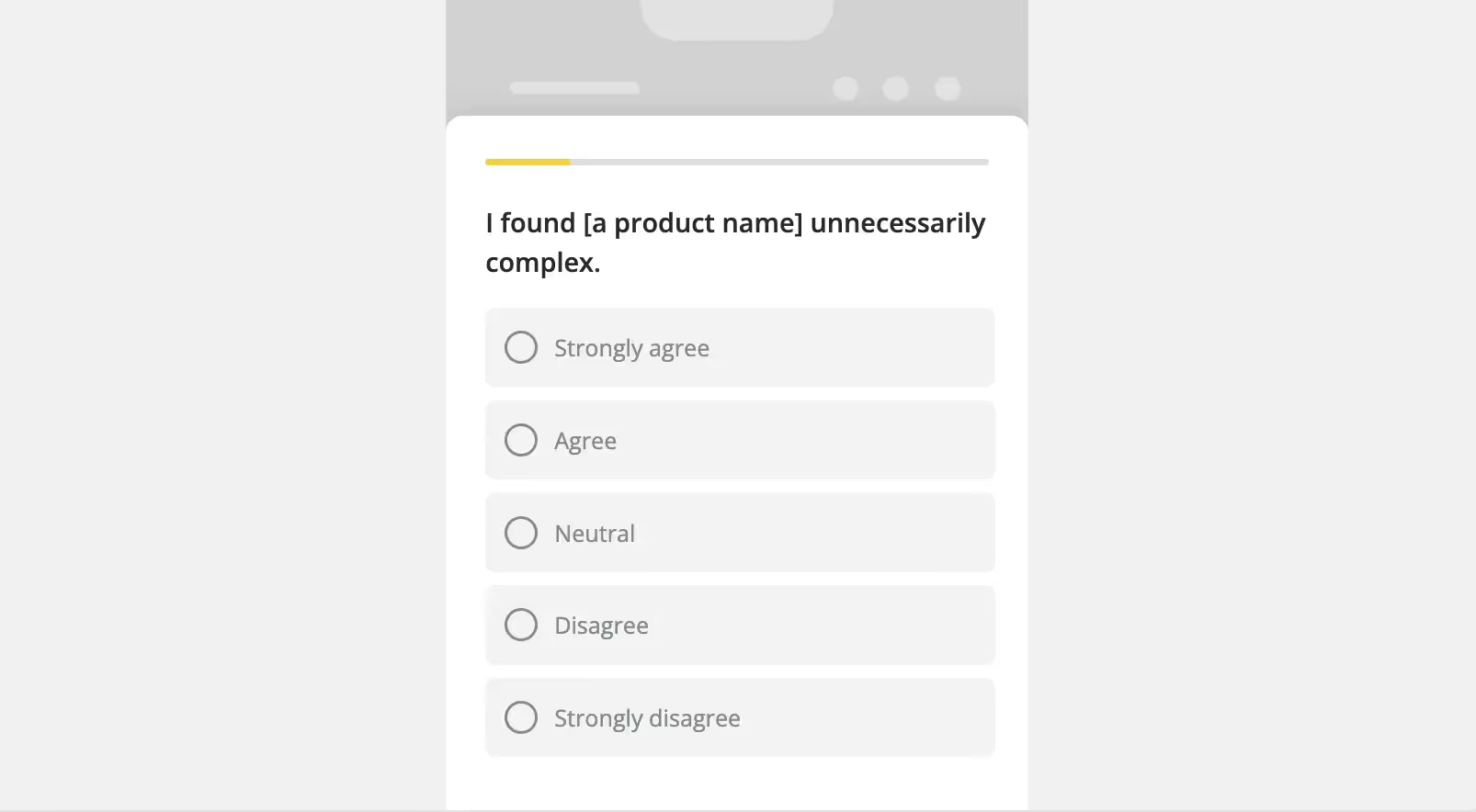
Bug reports
Bug reports are critical for identifying and fixing issues that affect your product's functionality and performance. Users report the bugs they encounter, providing details about the problem and how it impacts their experience.
The best feedback tools for this goal are feedback buttons—widgets embedded into your product or website passively (and patiently) waiting to be used by someone in need.
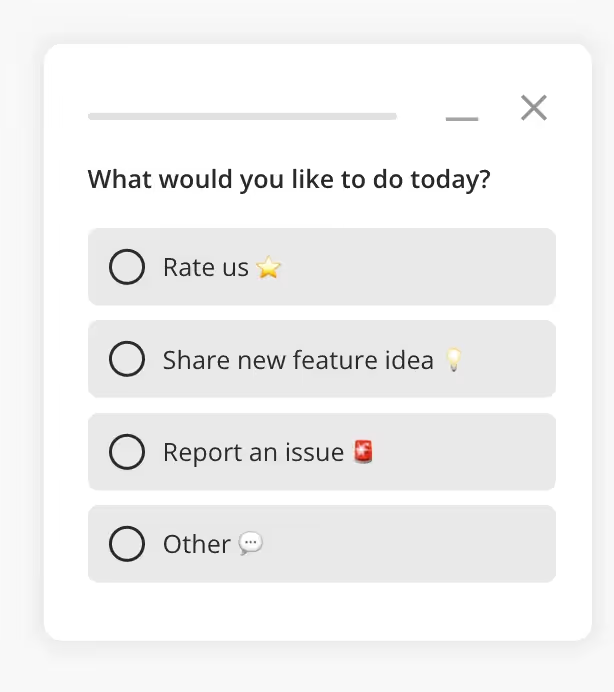
Release feedback
When the product team releases a new product or feature, you need to learn whether the offering hit the mark or if any adjustments are still required. It is an excellent opportunity to gather user feedback, as customers will want a say in whether the update meets their needs.

Onboarding feedback
Collecting onboarding feedback lets you see how new users experience your app from the start. It focuses on the initial setup, navigation, and ease of use. This feedback helps identify friction points or confusing elements so you can improve the onboarding process and boost user engagement and retention.
Post-purchase surveys
Post-purchase surveys obtain feedback from users after they complete a purchase to understand their buying experience and satisfaction.
Exit surveys
Exit surveys collect feedback from users leaving the product or service to understand their reasons and identify potential areas for retention.
📚 Also read: Everything You Need To Know About Website Exit Survey
Check out Survicate today.
Sign up for a free Survicate account and embark on a 10-day journey of discovering meaningful customer feedback insights. Don't forget to explore our pricing to see our pricing options.
You can foster your decision making checking our newst ranking of best customer satisfaction tools and/ or best website satisfaction tools.
Get access to all our integrations, ready-to-send survey templates, and more. Play around with the creator and start data collection with no strings attached.








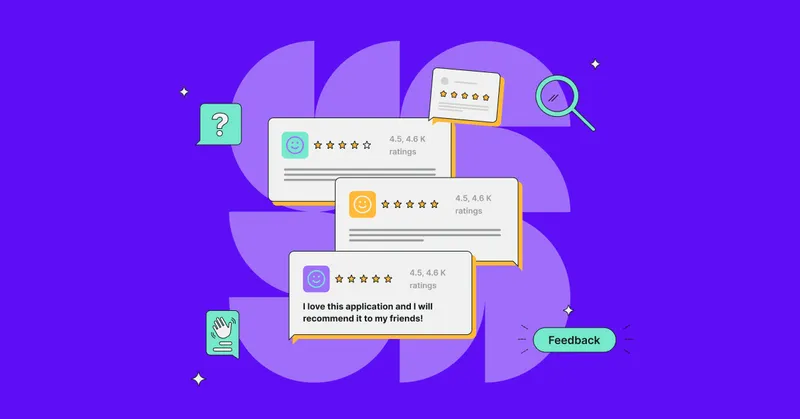
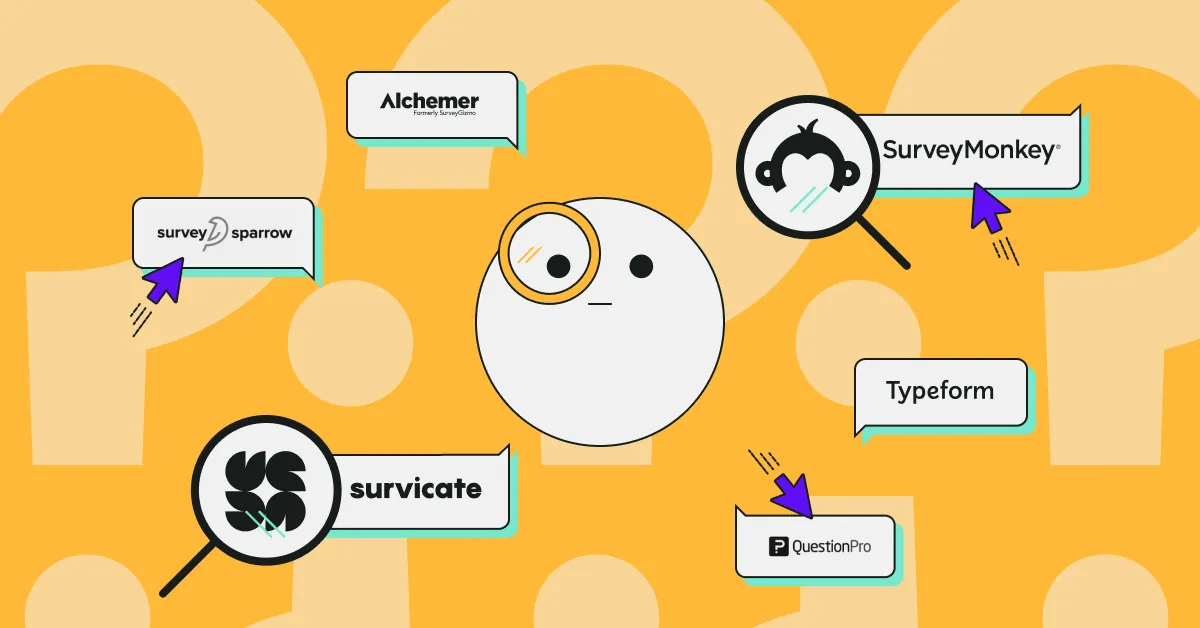
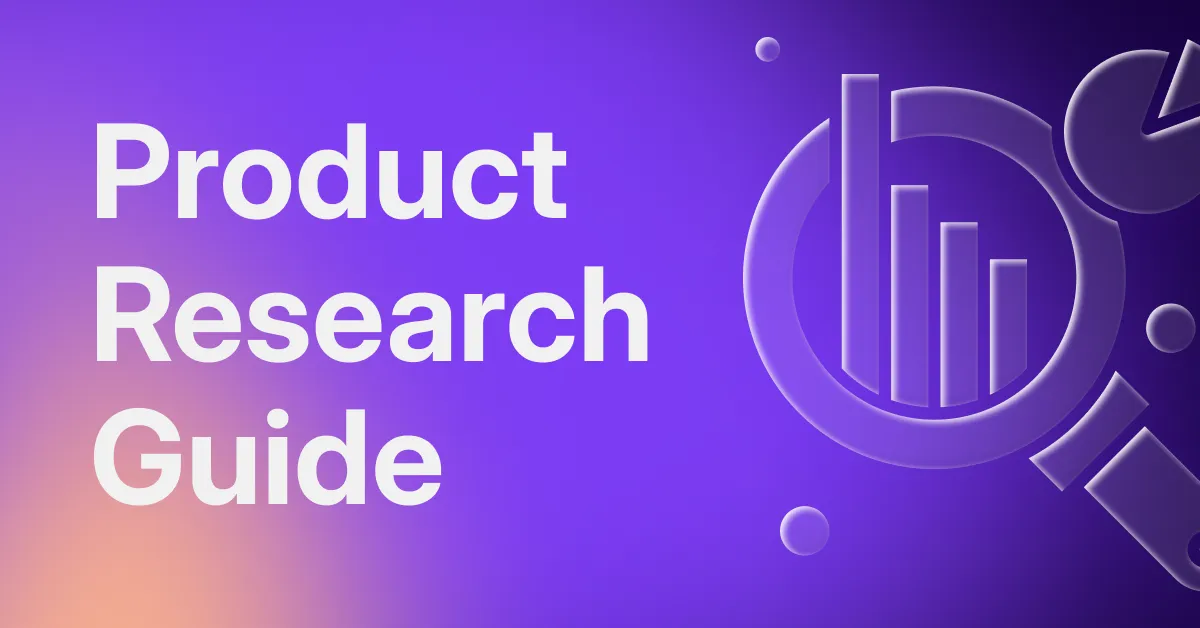
.png)

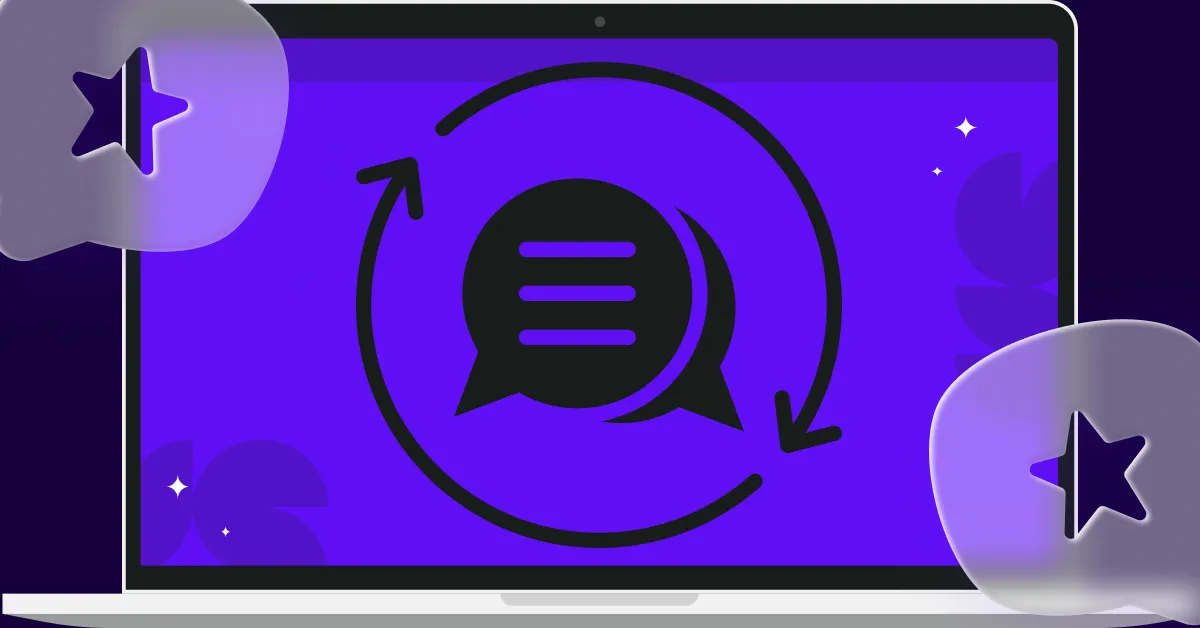

.svg)

.svg)



